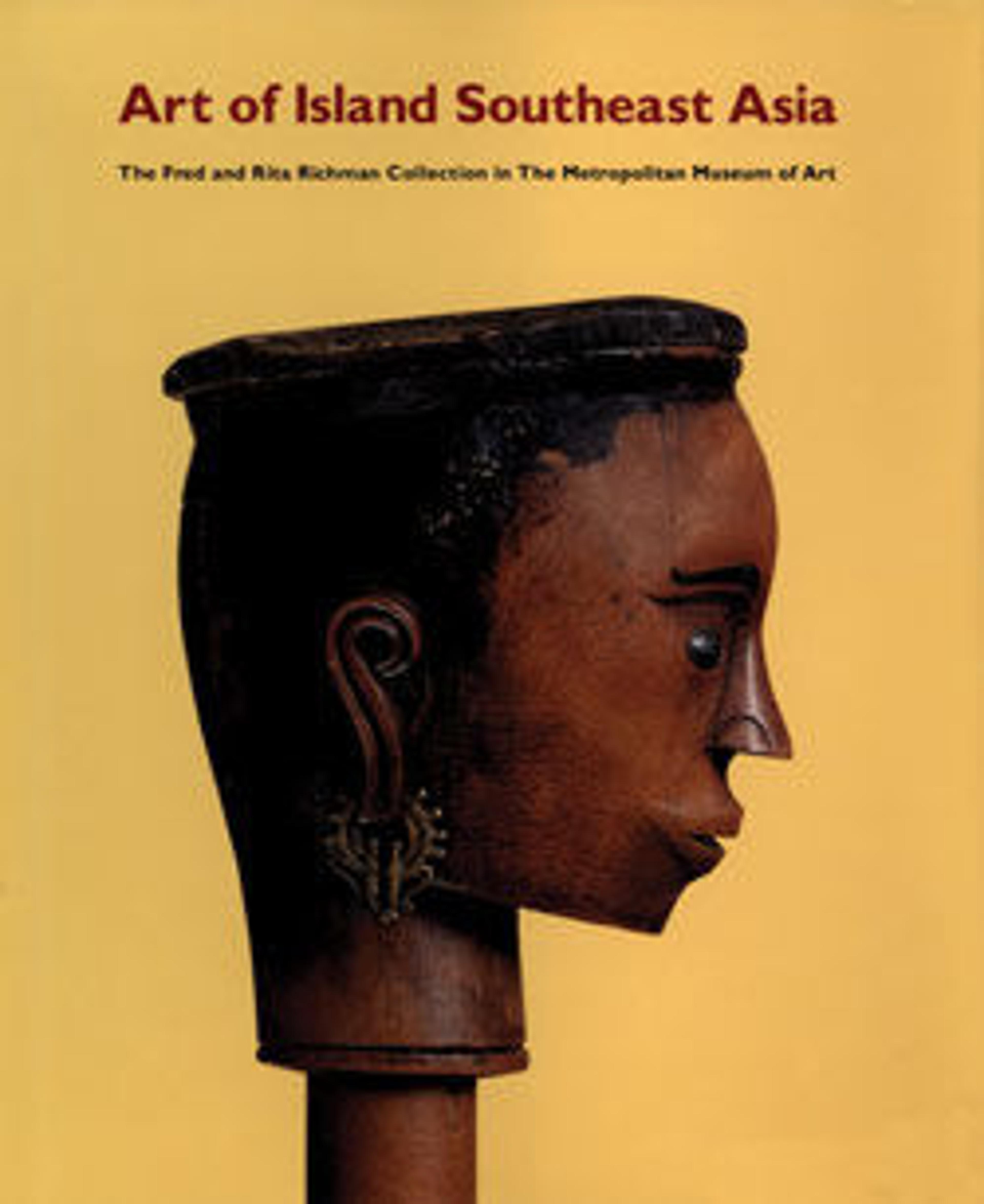Naga morsarang (medicine horn)
Among the Batak people of Sumatra, the datu, or ritual specialist, required a variety of containers made of different materials to hold his supernaturally powerful mixtures and potions. This vessel, known as a naga morsarang, consists of the hollow horn of a water buffalo, its outer surface incised with curving foliate designs. In the interior of the horn, the earth deity Boraspati Ni Tano is represented in the form of a lizard, a motif that occurs on other ritual objects such as divination books.
The horn's pointed end is carved in the form of a seated human figure. The wider, open end is plugged with an elaborate wooden stopper that depicts the singa (a zoomorphic underworld deity) with four human figures riding on its back. These human figures may represent the succession of ritual masters who preceded the datu who owned the container. It is also possible that the figures are related to mythical characters portrayed on other ritual implements.
The horn's pointed end is carved in the form of a seated human figure. The wider, open end is plugged with an elaborate wooden stopper that depicts the singa (a zoomorphic underworld deity) with four human figures riding on its back. These human figures may represent the succession of ritual masters who preceded the datu who owned the container. It is also possible that the figures are related to mythical characters portrayed on other ritual implements.
Artwork Details
- Title:Naga morsarang (medicine horn)
- Artist:Toba Batak artist
- Date:19th–early 20th century
- Geography:Indonesia, Sumatra
- Culture:Toba Batak
- Medium:Water buffalo horn, wood
- Dimensions:H. 13 1/2 × W. 3 × D. 22 in. (34.3 × 7.6 × 55.9 cm)
- Classifications:Ivories-Horn, Bone/Ivory-Implements
- Credit Line:Gift of Fred and Rita Richman, 1987
- Object Number:1987.453.1
- Curatorial Department: The Michael C. Rockefeller Wing
More Artwork
Research Resources
The Met provides unparalleled resources for research and welcomes an international community of students and scholars. The Met's Open Access API is where creators and researchers can connect to the The Met collection. Open Access data and public domain images are available for unrestricted commercial and noncommercial use without permission or fee.
To request images under copyright and other restrictions, please use this Image Request form.
Feedback
We continue to research and examine historical and cultural context for objects in The Met collection. If you have comments or questions about this object record, please contact us using the form below. The Museum looks forward to receiving your comments.
